Dr Ashfaque H. Khan, Dr Hafiz A Pasha and Dr Salman Shah in a reply to MoF's response to their article have mentioned that they were expecting a response from the IMF but instead the MoF responded to their article. In their reply, they have repeated the same issues such as PBS compilation of unemployment rate, building of reserves through debt, declining exports, performance of power sector, the FBR's tax collections and payment of refunds, etc.
It is a matter of delight that at least they have admitted that the PBS computes the National Accounts according to well-stated and publicly-shared parameters and now their criticism is confined to the use of raw data/inputs into the methodology. In this regard, a number of clarifications were made. However, it is again submitted for their information that the data used to compute the GDP numbers is provided by a host of agencies, public and private as well as federal, provincial and local authorities. These data sources are fixed as approved by the National Accounts Committee. The data providers are the members of the National Accounts Committee meeting and verify the data provided by them. The data available for nine months, and in some cases for six months, is annualized and used.
As far as the compilation of unemployment rate is concerned, it is worth mentioning that PBS has been following the internationally approved methodology over the years and no change in compilation procedures was carried out during the referred years. The writers have presented new unemployment rates for 2014-15 by including the discouraged workers, which is not the internationally accepted methodology. The fact is that the writers, by including the discouraged workers only in 2014-15 and ignoring these workers in 2013-14, have committed intellectual dishonesty. Had they done such an exercise, the unemployment rate for 2014-15 would have been on the same level as reported by PBS.
The writers' assertion regarding building up of foreign exchange reserves through debt is incorrect despite giving clarifications earlier. It is to be noted that the external public debt has gone up by US $9.59 billion during the last three years (2013-14 to 2015-16)while FX reserves of SBP have increased by US $12.1 billion in the same period or by US $15.3 billion when compared from February 2014 to June 2016. Further, the present government has repaid around US $12 billion of external debt till end June 2016, which was mainly related to the borrowings of the previous governments. Despite these heavy repayments, the FX reserves of the country have risen to more than US $23 billion, of which SBP reserves were US $18.1 billion at end June 2016, which is equal to over five months of import-cover as compared to less than around 3 weeks of import-cover in February 2014 when the SBP reserves stood at US $2.8 billion. Moreover, apart from repayments, current account deficits were also met persistently for the past 3 years while maintaining growth in foreign exchange reserves. The healthy foreign exchange reserves act as cash buffers while helping to boost investor confidence for economy.
The issuance of Sovereign Sukuk Bond is a part of financing plan (Budget: 2016-17) and has no relevance with the end of IMF program and unsustainability of foreign exchange reserves as claimed in the news article. In fact, investor confidence is evident from the fact that Pakistan successfully issued US $1 billion Sukuk at a historic low rate of 5.5 percent, which is better than recent sovereign issuance of bonds by both Bahrain and Sri Lanka, the credit ratings of which are higher than Pakistan. The issuance of Sukuk will equally reduce the domestic public debt by around Rs 104.5 billion and will, therefore, not result in any increase in the country's overall public debt.
The article mentioned some gross external financing numbers by challenging the IMF projections, which are entirely based on writers' own assumptions and not supported by the factual data rather on self-developed models that are prone to data mining among other shortcomings. The writers have made many such false projections in the past such as economy slipping into deflation that does not materialise. Further, the IMF, being an independent institute, and credit rating agencies in their recent reports acknowledged this fact that Pakistan external debt is on sustainable path and there is very little exposure to medium term vulnerabilities. Therefore, such baseless assumptions/projections further erode their creditability since these are only meant to make sensations while completely ignoring the true picture.
In their reply they have claimed that the MoF only argued that the government is making serious efforts to address the issue on declining exports without providing any details of the measures that are currently being taken by the government. In this respect, it is important to clarify that measures to increase exports have not only been mentioned in response to various articles published earlier, but it has also been discussed and explained on number of forums. Above all, at the time of budget announcement, Finance Minister in his budget speech has categorically described the measures for export promotion and is available on MoF web site.
The government is taking serious efforts to address the issue of declining exports. It may be noted that there is muted economic growth across the globe. Pakistan's major trading partners; USA, China, EU witnessed a sluggish economic growth. Our major share of exports goes to US, China and EU. The slow growth in China and EU and weak demand has also impacted Pakistan's exports growth. However, the government is fully cognizant of this issue and taking a number of measures to increase exports. Strategic Trade Policy Framework (STPF) 2015-18 for export promotion is a welcome development which will enhance exports in future. The STPF 2015-18 includes plans to enhance Pakistan's export competitiveness by way of initiatives relating to product diversification, value addition, trade facilitation and enhanced market access. The new trade policy set the target of US $35 billion of exports.
With regard to the decline in non-tax revenues, authors believe that the target for non-tax revenue is not going to be achieved this year. They are also of the view that the current expenditure is also understated in the current year's budget. In this regard, it is to explain that the receipts on account of CSF are budgeted as intimated by the concerned agencies. Such receipts are in fact reimbursements of actual expenditure relating to western borders operations. These are due payments and are projected to be received during current financial year.
On the other hand growth in current expenditure has been considerably reduced which has become possible due to decrease in fiscal deficit and resultantly less domestic interest payments. During 2015-16, growth in current expenditure was 6 percent while in budget 2016-17 growth in current expenditure is projected at 7.4 percent of GDP. According to the recent data, growth in total expenditure is contained at 2.8 percent during the first quarter of FY2017 against the growth of 7.5 percent recorded in the same period of FY2016. In terms of GDP, total expenditures stood at 3.9 percent during first quarter of FY2017 against 4.1 percent in the same period of FY2016, while current expenditure recorded at 3.2 percent as percent of GDP during Q1 of FY2017 against 3.5 percent of GDP in the same period of last year. The current expenditures have posted a negative growth of 1.3 percent during Q1 of FY2017 against the growth of 3.3 percent registered in the same period of FY2016 augur well that expenditures will be contained as per projections.
With reference to the authors' assertions regarding recent performance of the power sector, the following points need further clarification.
The authors' contention that the distribution companies (DISCOs) did not show any noticeable improvement is not correct as their analysis is based on data for FY2015. During FY2016, power sector distribution companies have shown remarkable improvement both in terms of reduction in line losses and collection from consumers. Line losses have reduced to 17.9 percent during FY2016 from 18.7 percent during FY2015 and collection from consumers improved to 94.6 percent during FY2016 as compared to 89.2 percent a year earlier. As a result of this improvement in operational performance, the power sector subsidies have rationalised to Rs 118 billion during FY2016 as indicated in Federal Budget for 2017. Subsidies are now targeted to the vulnerable segments of the society.
As a result of better operational and financial management by the current government, the average shortfall has reduced to 2,600MW from 2,900MW that resulted in reduction of load shedding to 6-8 hours a day.
Similarly, the authors' viewpoint that four power sector distribution companies are utilising 85 percent of power generation is not supported by facts and figures as during FY2015, power supply to four Discos, ie, Lesco, Gepco, Mepco and Fesco is 58 percent.
The incumbent government inherited a huge stock of power holding loans of Rs 239.5 billion, therefore, the contention that the circular debt must include the Power Holdings Private Limited (PHPL) loans is not correct as the payment of debt servicing of these loans is being made directly by the power sector distribution companies. In fact, current government is discharging the pending liabilities of previous governments.
Power sector operates in a regulated environment and energy prices are also determined by power regulator (Nepra) by keeping in view the revenue requirement of distribution companies (Discos). Targets for line losses and collection are determined by Nepra. Currently, all the Discos are in the process of filing the Multiyear Tariff Petitions. Multi-year tariff determination for three power sector Discos, Iesco, Lesco and Fesco has been issued by Nepra that contains a detailed tariff methodology in line with Nepra Act and Rules.
With regard to the FBR, authors have stated that there is a shortfall in FBR tax revenue during July-October 2016, decline in Income tax revenue through demand creation, share of Direct taxes in federal taxes is 35 percent and not 39 percent, effective rate of customs duty on imports has gone up from 6 percent to 9 percent and issue of Payment of Refunds.
In this context, it is important to understand that FBR has collected Rs 860 billion provisional collection during July-October FY2017 as compared to Rs 814 billion collected in the corresponding period last year. In absolute terms Rs 46 billion higher amount has been collected. Comparing with the revenue target it is clarified that the collection trends during first few months remain low as compared to the second half of the year. It is expected that the collection will pick up in coming quarters more rapidly and the loss occurred in first few months would be compensated.
However, there are various reasons for this decline. Major decline has been noticed in oil and gas sector with Rs 20 billion lower collection as compared to corresponding period last year. The sales tax rate on motor spirit in July, August and September 2015 were 17 percent, 20 percent and 25.5 percent, respectively and were reduced to 17 percent in the first quarter of CFY. The price per litre of motor spirit was around Rs 60 per litre in first quarter of 2015-16 as against price of Rs 50 per litre in first quarter of CFY. Both these factors ie reduced rate of sales tax and price per litre has resulted in lower collection. Rate of sales tax on high speed diesel was 29 percent, 35.5 percent and 45 percent in July, August and September 2015, respectively as against rate of 28 percent, in CFY. Similarly, the price per litre was also higher in first quarter of 2015 as compared to 2016 resulting in reduced collection of sales tax.
The sales tax collection on imports grew only by 0.2 percent and less than expected growth of sales tax on imports is due to the zero-rating of the inputs of five export sectors and the substantial reduction in sales tax rate on Urea fertilizers. These steps were taken in the recent budget to boost exports and to support the agriculture sector but were bound to have adverse impact on FBR revenues. Moreover, revenue measures taken in the last budget will take some time to yield the desired yield and after the usual lag will offset the impact of the relief measures taken by the government for overall economic growth.
The reason for the decline in income tax revenue through demand creation is that the field formations have been facing various problems. One major problem being the cases stuck at different levels of appellate fora. Once these issues are settled, the collection through demand creation would increase.
Writers claim that the share of direct taxes in federal taxes is 35 percent and not 39 percent is baseless as the data confirms that the share of direct taxes has increased from just 18 percent in 1990-91 to more than 39 percent in 2015-16. The present government has taken serious measures to increase the share of revenue from direct taxes to bring equity and fairness in the system and to encourage progressive taxation instead of regressive taxation. The concept of filers and non-filers was introduced in order to increase the number of filers in the country. The cost of business for non-filers has been increased in the recent years. Resultantly, the number of filers has also increased due to levy of higher withholding tax rates for non-filers. This differential treatment has not only been introduced in banking sector but also other sectors like purchase of movable and immovable properties.
With regard to the effective rate of customs duty on imports, it has gone up from 6 percent to 9 percent, it is clarified that in the reforms process during the last three years, not only the maximum rate of Customs Duty has been brought down from 30 percent to 20 percent, the Customs Duty slabs have also been reduced from 7 to 4 ie 3 percent, 11 percent, 16 percent and 20 percent. The effective rate, which was 5.43 percent in 2013-14, has increased to 8.86 percent in 2015-16 because of elimination of exemptions. During the last three years, besides drastic reduction in the exemption regime of other taxes, Customs Duty related exemptions; to the tune of Rs 64.1 billion have been withdrawn. This has brought the share of duty free import in total import value from 62 percent in 2013-14 to merely 27 percent in 2015-16. These reforms measures have altered the rent seeking nature of selected sectors of the economy making them more competitive.
Currently, 94 percent of country's import, in terms of value, falls in the Customs Duty rates of 3 percent to 20 percent. In the budget 2016-17, the duty rate of more than two thousand items, mostly machinery and primary raw material, was reduced from 5 percent to 3 percent, extending benefit of more than Rs 18 billion to the industry.
Regulatory Duty has been imposed mainly on two types of goods, firstly some selected items of non-essential nature to reduce the trade deficit and protect precious foreign exchange and secondly to protect local industry in the wake of unusual fall in prices of certain goods in the international market.
On the issue of payment of refunds it is important to mention that the FBR is trying to promote tax culture and taxpayer friendly environment in the country. It facilitates the taxpayers/refund claimants through speedy clearance of refunds. Overall tax refund claims have declined. The net revenue collection during 2012-13 was Rs 1946 billion and the pending refund claims were 9.5 percent of net collection. This percentage has declined during the last three years and the net collection as on 30th June 2016 was Rs 3112 billion whereas, the pending refund claims were 6.7 percent of the net collection.
The FBR has cleared sales tax refund claims of Rs 21.5 billion which have been electronically transferred to accounts of refund claimants. Earlier in August the refund claims of Rs 22 billion had been cleared. It is further clarified that current government inherited pending refund claims of Rs 211 billion in 2013, but is committed to clear all refund claims in minimum time.
BR100
16,353
Decreased By
-52.7 (-0.32%)
BR30
52,830
Decreased By
-107.9 (-0.2%)
KSE100
158,318
Decreased By
-463 (-0.29%)
KSE30
48,218
Decreased By
-281.9 (-0.58%)






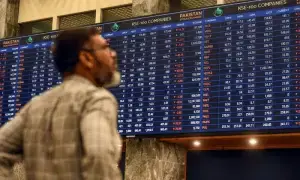
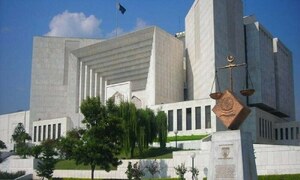







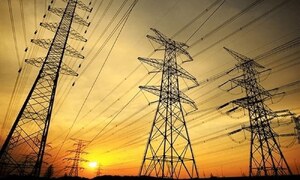

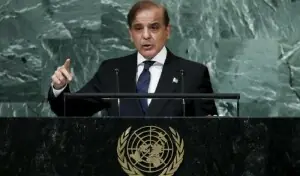


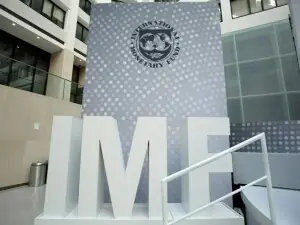
Comments
Comments are closed.